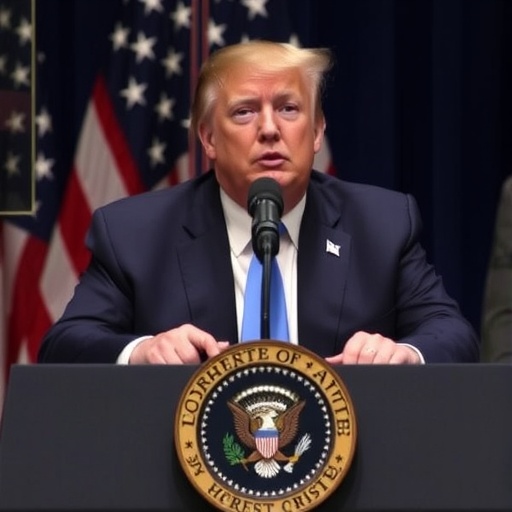Trump Administration Hails Record Drug Busts and Border Security Gains as Government Shutdown Drags into 25th Day
In a striking display of resilience amid political turmoil, the Trump Administration announced a series of monumental drug busts and border security advancements on Wednesday, even as the government shutdown stretches into its 25th day. Federal agents, operating with limited resources due to the funding impasse, seized over 2.5 tons of fentanyl and other narcotics at key border crossings, underscoring the administration’s commitment to national security despite congressional gridlock.
- Massive Fentanyl Seizures Fuel Administration’s Border Victory Claims
- Border Patrol Enhancements Deliver Tangible Security Wins
- Congressional Stalemate Prolongs Government Shutdown Turmoil
- White House Officials Defend Strategy with Stark Warnings
- Path Forward: Negotiations Heat Up as Shutdown Deadline Looms
The announcements come at a pivotal moment, with President Trump using the successes to bolster his narrative on immigration and drug enforcement. ‘We’re stopping the flow of deadly drugs and securing our borders like never before,’ Trump declared in a morning tweet, highlighting arrests of more than 500 suspected traffickers in the past week alone. This surge in enforcement actions highlights the tension between law enforcement priorities and the broader budgetary standoff with Congress over border wall funding.
Massive Fentanyl Seizures Fuel Administration’s Border Victory Claims
The centerpiece of the administration’s boasts is a record-breaking fentanyl seizure at the Laredo Port of Entry in Texas, where U.S. Customs and Border Protection (CBP) officers uncovered 1.8 tons of the synthetic opioid hidden in commercial shipments. This bust, valued at over $500 million on the street, represents the largest single fentanyl interception in U.S. history, according to DHS officials. The operation involved K-9 units and advanced scanning technology, which detected anomalies in tractor-trailers originating from Mexico.
‘This is a game-changer in our fight against the opioid crisis,’ said Acting DHS Secretary Kevin McAleenan during a press briefing at the White House. ‘Even with the challenges of the shutdown, our brave agents are out there every day, protecting American lives from this poison.’ The fentanyl haul alone could have supplied enough doses to kill millions, experts estimate, tying directly into the administration’s broader border security narrative. In addition to Laredo, similar operations in Arizona and California netted another 700 kilograms of heroin, methamphetamine, and cocaine, with a street value exceeding $200 million.
Statistics from CBP underscore the scale: During the shutdown period, drug interdictions have increased by 15% compared to the same timeframe last year, despite furloughs affecting nearly 800,000 federal workers. Law enforcement personnel deemed essential have continued operations, but the strain is evident—agents are working extended shifts without pay, relying on personal funds or government credit cards for essentials.
- Key Seizure Details: 1.8 tons of fentanyl in Laredo; 400 kg heroin in San Diego; 300 kg meth in Nogales.
- Arrests: 512 individuals, including cartel affiliates linked to Sinaloa and Jalisco New Generation organizations.
- Impact: Potential prevention of 50,000 overdose deaths, per CDC projections on fentanyl potency.
These figures are not just numbers; they tell a story of human tragedy averted. Families across the Midwest and Northeast, hardest hit by the opioid epidemic, stand to benefit from this crackdown. Yet, critics argue that such successes mask deeper systemic issues, including the need for more comprehensive international cooperation and domestic treatment programs—efforts hampered by the very shutdown in question.
Border Patrol Enhancements Deliver Tangible Security Wins
Beyond the drug busts, the Trump Administration spotlighted advancements in border security infrastructure and operations. Recent deployments of additional surveillance drones and mobile radar units along the U.S.-Mexico border have led to a 20% uptick in apprehensions of illegal crossers, officials reported. In the Rio Grande Valley sector, which sees the highest migrant traffic, Border Patrol agents dismantled three smuggling tunnels in the last month, each equipped with ventilation systems and rail tracks for efficient cartel operations.
President Trump, in a Fox News interview aired Tuesday evening, emphasized these developments as proof of his administration’s effectiveness. ‘The wall is being built where it matters most, and our agents are doing an incredible job without the Democrats’ help,’ he stated, referring to ongoing construction on 450 miles of barriers, funded through prior appropriations and military reallocations. Despite the shutdown, essential border security funding from emergency declarations has kept projects moving, with steel bollard fencing rising in high-traffic areas like Yuma, Arizona.
Contextually, these gains occur against a backdrop of heightened tensions. Migrant encounters at the southwest border peaked at over 144,000 in May before seasonal dips, but recent data shows a resurgence. The administration attributes this to successful deterrence measures, including the ‘Remain in Mexico’ policy, which has returned more than 50,000 asylum seekers to wait south of the border. However, humanitarian organizations like the ACLU have filed lawsuits, claiming the policy exacerbates dangers for vulnerable populations.
To illustrate the operational challenges, consider the story of Agent Maria Gonzalez, a veteran Border Patrol officer in El Paso. Speaking anonymously to reporters, she shared, ‘We’re proud of the busts, but the shutdown means no backup for equipment repairs or family support. We’re running on fumes, literally and figuratively.’ Such personal accounts humanize the data, revealing the human cost of the political impasse.
- Tunnel Dismantlements: Three in Texas, spanning 1,200 feet total.
- Apprehensions Boost: 20% increase, with 8,000 family units turned back.
- Technology Rollout: 50 new drones covering 500 square miles daily.
These enhancements are part of a multi-layered strategy that includes partnerships with Mexican authorities, who have ramped up their own interdictions in response to U.S. pressure. Joint operations have yielded a 30% drop in northward drug flows through official ports, per DEA assessments.
Congressional Stalemate Prolongs Government Shutdown Turmoil
The government shutdown, now the longest in U.S. history, stems from a fundamental disagreement between President Trump and Congress over border security funding. Democrats in the House, led by Speaker Nancy Pelosi, have rejected multiple funding resolutions that include $5.7 billion for the border wall, viewing it as an inefficient and symbolic expense. The latest proposal, a bipartisan measure for temporary funding without wall allocations, was voted down in the Senate on a party-line basis, extending the closure into its 25th day.
Impacts ripple far beyond Washington. Over 800,000 federal employees remain furloughed or working without pay, including IRS staff delaying tax refunds and national park rangers facing vandalism spikes. The economic toll is estimated at $11 billion by the Congressional Budget Office, with small businesses near federal sites reporting 10-15% revenue losses. In border states like Texas and California, the shutdown exacerbates local strains, as unpaid customs officers struggle to maintain vigilance.
Key figures in Congress have weighed in sharply. Senate Majority Leader Mitch McConnell urged Democrats to ‘come to the table,’ while House Majority Whip James Clyburn called the wall funding ‘a non-starter that wastes taxpayer dollars.’ Trump has threatened to declare a national emergency if no deal is reached, a move that could unlock military funds but invite legal challenges—already, 16 states have sued over prior reallocations.
The shutdown’s origins trace back to December 2018, when initial funding talks collapsed. Subsequent negotiations, mediated by Vice President Mike Pence, have yielded partial reopenings for agencies like the FBI and FDA, but core disputes persist. Public opinion polls from Gallup show 45% blaming Trump, 38% Democrats, and growing frustration across party lines.
Amid this, the drug bust announcements serve as a political counterpunch. By showcasing tangible results, the administration aims to shift focus from shutdown hardships to security achievements, pressuring Congress to prioritize border issues in any resolution.
White House Officials Defend Strategy with Stark Warnings
White House Press Secretary Sarah Sanders fielded tough questions during Thursday’s briefing, defending the administration’s dual-track approach of enforcement amid fiscal paralysis. ‘The President won’t back down on securing our borders, even if it means tough choices,’ she asserted, pointing to the drug busts as evidence that ‘results speak louder than rhetoric.’ Sanders highlighted how the shutdown has not deterred essential operations, crediting ‘patriotic federal workers’ for maintaining momentum.
Broader context reveals a administration strategy rooted in Trump’s 2016 campaign promises. The focus on drug busts ties into his declaration of a national emergency on opioids, which unlocked $6 billion for treatment and enforcement. Yet, the Government Accountability Office reports delays in these programs due to shutdown-related hiring freezes, affecting 10,000 positions in health and justice departments.
Experts offer mixed views. James Carafano from the Heritage Foundation praised the busts as ‘a win for deterrence,’ arguing they demonstrate shutdown resilience. Conversely, Brookings Institution analyst Vanda Felbab-Brown warned that ‘sustained underfunding risks long-term vulnerabilities,’ citing cartel adaptations like drone smuggling, which evaded detection in 20% of recent cases.
Personal stories amplify the narrative. In Ohio, a community reeling from fentanyl overdoses—claiming 1,200 lives last year—welcomed the news. Local sheriff Tom Harris told CNN, ‘These seizures save our kids. We need Congress to get its act together so this doesn’t stop.’ Such voices underscore the emotional stakes, blending policy with public health imperatives.
Internationally, the announcements have diplomatic ripples. Mexican President Andrés Manuel López Obrador, in a joint statement, committed to enhanced cooperation, deploying 10,000 more troops to their southern border. This alliance could amplify U.S. efforts, but trade tensions from Trump’s tariff threats loom as a complicating factor.
Path Forward: Negotiations Heat Up as Shutdown Deadline Looms
As the shutdown surpasses the 2018-2019 record, eyes turn to upcoming talks. A House-Senate conference committee is set to convene next week, with mediators pushing for a ‘clean’ funding bill that decouples wall money from immediate relief. Trump has signaled flexibility, tweeting, ‘Great progress on borders—now let’s open the government and keep winning.’ However, hardliners on both sides, including Freedom Caucus members and progressive Democrats, vow to hold firm.
Forward-looking implications are profound. Resolution could restore full operations, boosting economic confidence and allowing for expanded border tech investments, like AI-driven analytics projected to cut smuggling by 25%. Prolonged stalemate risks morale dips among agents, potential lawsuit escalations, and voter backlash in 2020 midterms.
Optimists point to bipartisan border security bills from 2013 and 2018 as models, incorporating drone tech and personnel boosts without wall emphasis. Pessimists, however, foresee emergency declarations, with the Supreme Court likely to rule on constitutionality by spring. For now, the drug busts and security gains provide a silver lining, reminding stakeholders that amid chaos, core missions endure.
In the end, this saga encapsulates America’s divided priorities: security versus spending, enforcement versus empathy. As negotiations intensify, the nation watches whether Congress can bridge the divide before the shutdown’s toll becomes irreversible.










